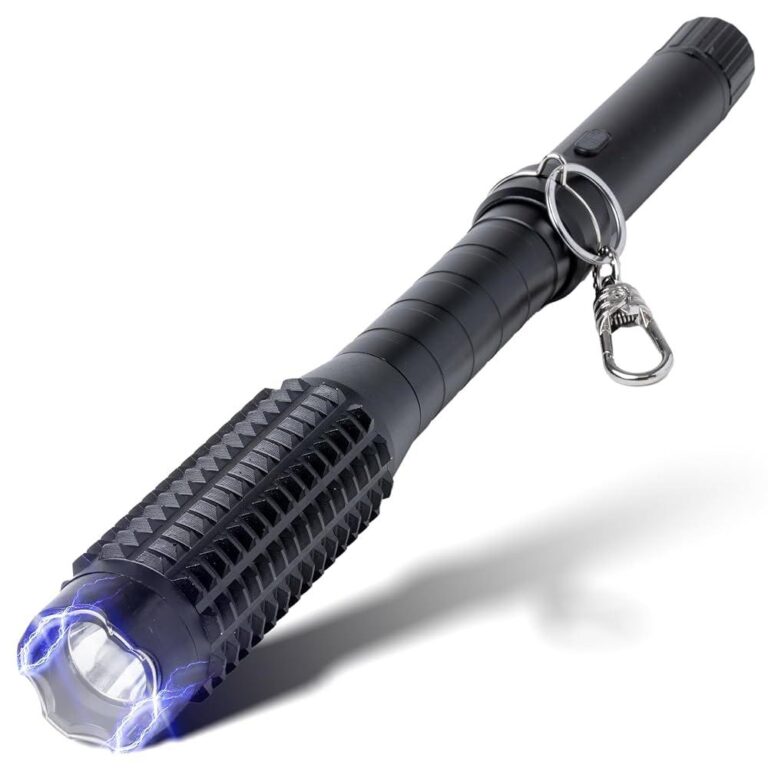Table of Contents
- Understanding TSA Regulations on Stun Guns for Air Travel
- Differences Between Carry-On and Checked Baggage Rules for Stun Guns
- Tips for Traveling with Stun Guns Safely and Legally
- Alternative Self-Defense Options for Air Travelers
- In Retrospect
Understanding TSA Regulations on Stun Guns for Air Travel
When planning to travel with a stun gun, it is crucial to be aware of the TSA’s strict stance on these devices. The Transportation Security Administration categorically prohibits stun guns in both carry-on and checked luggage. These regulations are in place to ensure the safety of all passengers and flight crew, as stun guns are classified as prohibited weapons under federal air travel rules. Attempting to bring one through security checkpoints will not only result in confiscation but may also lead to fines or other legal consequences.
However, there are a few key points travelers should remember:
- No Exceptions: TSA does not allow stun guns in either carry-on bags or checked baggage under any circumstances.
- Alternate Forms of Protection: Consider non-prohibited personal safety items, such as alarms or pepper spray (subject to state laws and airline policies).
- Security Screening Awareness: Declare any self-defense tools when required and always check the current TSA guidelines before traveling.
Differences Between Carry-On and Checked Baggage Rules for Stun Guns
When it comes to transporting stun guns on a plane, understanding the distinct rules for carry-on versus checked baggage is essential. Carry-on restrictions are generally stricter: stun guns are almost always prohibited in the cabin due to security concerns. This means you cannot place your stun gun in your personal item or overhead bin. Aviation authorities and security agencies prioritize passenger safety in the aircraft cabin, so even if your stun gun is non-lethal, it is typically disallowed in carry-on bags.
Conversely, checked baggage sometimes offers more flexibility, but with important caveats. Some airlines permit stun guns to be packed in checked luggage if they are properly declared and stored, often requiring the devices to be secured in a hard, locked case. However, restrictions vary widely by airline and destination, and some countries categorically ban stun guns altogether, regardless of packaging. Before flying, be sure to:
- Consult your airline’s policy on stun guns
- Verify the laws at your destination
- Declare the device at check-in to avoid confiscation or penalties
Tips for Traveling with Stun Guns Safely and Legally
When planning to carry a stun gun while traveling, it’s essential to prioritize both safety and legality. Always research local regulations at your destination and en route because laws regarding stun gun possession vary widely between states and countries. Never conceal your device in checked luggage if you’re flying; instead, pack it in your carry-on baggage and declare it at security checkpoints if required. Remember, airlines generally prohibit stun guns in carry-ons and checked bags, so consulting airline policies beforehand can save you from confiscation or fines.
To ensure smooth transit, keep these practical tips in mind:
- Charge the stun gun fully before travel – some models are mandated to be powered off and disconnected during flights.
- Use protective cases designed specifically for stun devices to prevent accidental activation and ease inspection processes.
- Carry documentation such as purchase receipts and manuals, which may demonstrate the device’s non-threatening purpose at customs or security checks.
- Avoid using stun guns in restricted zones like airports, military bases, or government buildings to stay compliant with laws and maintain public safety.
Alternative Self-Defense Options for Air Travelers
When traveling by air, especially through busy airports and unfamiliar destinations, personal safety is a key concern. Since stun guns and many other self-defense tools are restricted onboard, it’s wise to consider alternative options that comply with TSA regulations. Personal safety alarms are a popular choice; these small devices emit a loud siren to deter potential threats and attract attention without violating any travel policies. Additionally, some travelers opt for tactical flashlights that serve a dual purpose: providing illumination and functioning as a potential temporary distraction if faced with danger.
Another practical option includes travel-sized pepper sprays containing low concentrations specifically allowed in carry-on luggage, but always double-check with local airline and destination laws. Beyond gadgets, mastering basic self-defense techniques like situational awareness and de-escalation tactics can significantly improve your safety. Incorporating these strategies can empower you to handle unexpected encounters effectively, ensuring peace of mind throughout your journey.
In Retrospect
In summary, while stun guns can offer a sense of security, they are generally prohibited in carry-on and checked baggage on commercial flights due to strict airline and TSA regulations. Before traveling, it’s essential to review the specific rules of your departure and arrival locations, as laws vary by state and country. When in doubt, check with your airline and local authorities to avoid any complications at the airport. Staying informed ensures your trip remains safe and hassle-free-so plan ahead, pack smart, and travel confidently.Check Our Other Blogs
- StunGun – Your Trusted Source for Stun Guns, Laws, and Self-Defense Tips
- PepperSprayLaws – Your Trusted Resource for Pepper Spray Information
- StunGunLaws – Your Trusted Guide to Stun Gun Legality and Safety



